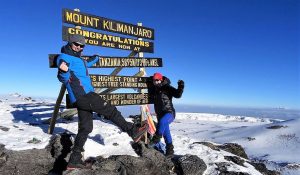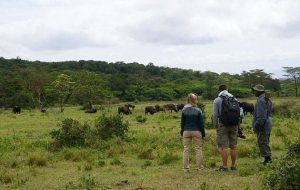Climbing Kilimanjaro: Understanding the Risks
Mount Kilimanjaro, the highest peak in Africa, is a magnet for adventurers and thrill-seekers from around the world. Standing at a staggering 19,341 feet, the dormant volcano offers a challenging yet rewarding climb for those brave enough to tackle its slopes. However, with great height comes great risks, and climbing Kilimanjaro is no exception.
The journey to the summit of Kilimanjaro is physically demanding, with climbers facing altitude sickness, extreme weather conditions, and treacherous terrain. The lack of oxygen at high altitudes can lead to a range of health issues, including headaches, nausea, and even pulmonary edema or cerebral edema in severe cases. The unpredictable weather on the mountain can change rapidly, with temperatures dropping below freezing and strong winds posing a danger to climbers.
Analyzing Fatalities on the World’s Tallest Mountain
Despite the thrill of conquering Kilimanjaro, the mountain has claimed the lives of several climbers over the years. The exact number of fatalities on Kilimanjaro is difficult to ascertain, as some deaths go unreported or are classified as accidents. However, it is estimated that around 10-15 deaths occur on the mountain each year.
One of the most common causes of death on Kilimanjaro is altitude sickness. As climbers ascend to higher altitudes, the decrease in oxygen levels can lead to symptoms such as dizziness, fatigue, and confusion. If left untreated, altitude sickness can progress to more severe conditions such as pulmonary or cerebral edema, which can be fatal.
In addition to altitude sickness, accidents and falls also contribute to the fatalities on Kilimanjaro. The steep and rocky terrain of the mountain poses a significant risk to climbers, especially in adverse weather conditions. Slippery surfaces and loose rocks can make for hazardous conditions, increasing the likelihood of accidents and injuries.
It is important for climbers to be adequately prepared before attempting to summit Kilimanjaro. Proper acclimatization, physical fitness, and mental readiness are crucial for a successful and safe climb. Choosing a reputable tour operator, such as Sunset Africa Safari, can also help ensure a safe and enjoyable experience on the mountain.
Sunset Africa Safari offers guided climbs to Kilimanjaro, with experienced guides and support staff to assist climbers every step of the way. For booking inquiries and more information about the tours, clients can contact info@sunsetafricasafari.com.
In conclusion, while the allure of Kilimanjaro may be strong, climbers must be aware of the risks involved in attempting to summit the mountain. By understanding the dangers and taking necessary precautions, climbers can increase their chances of a successful climb while minimizing the risks of injury or death.



